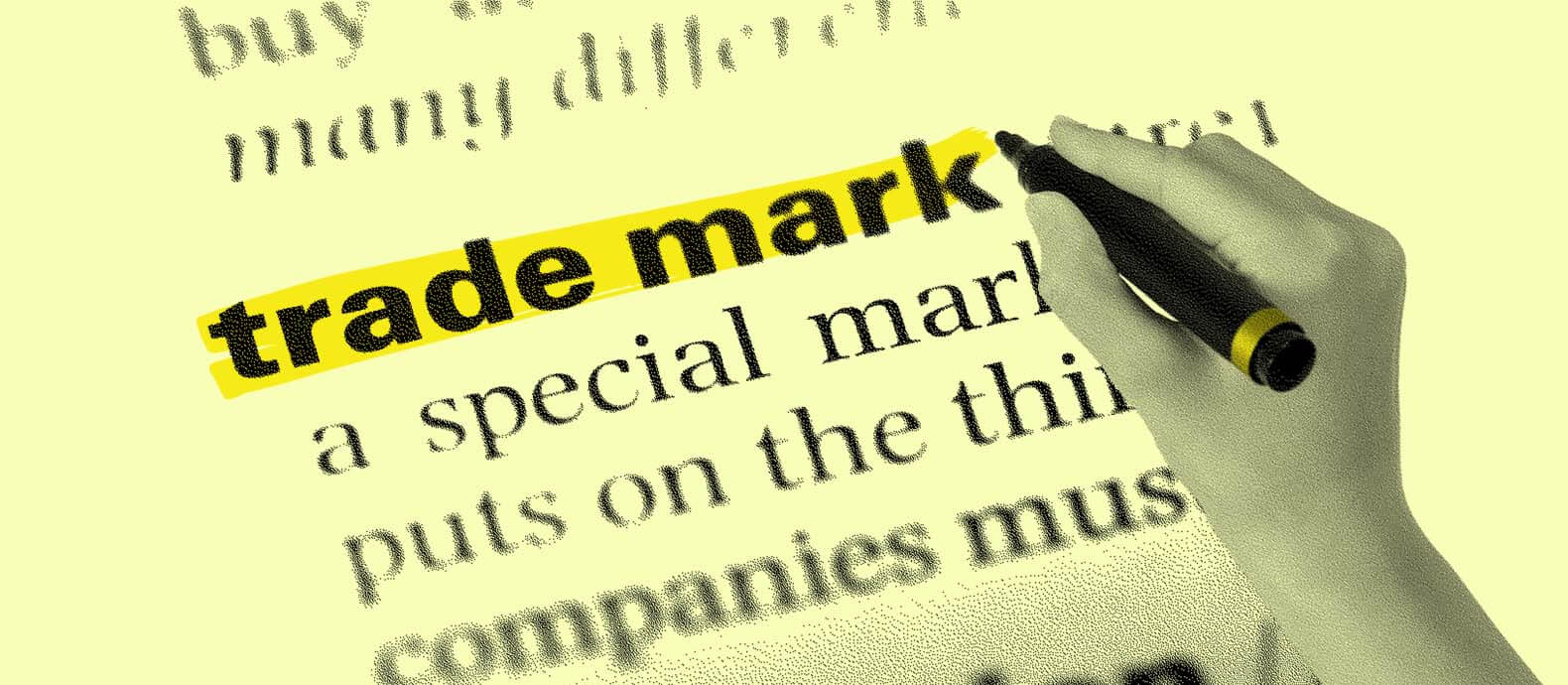Over 800,000 trademarks are successfully registered by U.S. companies every year. The prevalence of these registrations shows how intellectual property (IP) is a key resource for any commercial enterprise in today’s market. Indeed, it is important to safeguard your brand’s IP with legal protection and proactive brand-focused actions.
This IP protection is vital because there are many bad actors out there looking to undermine your IP and take advantage of your customers. One way scammers do this is by using your trademarks in a commercial context without your authorization – this leads to trademark dilution which can be potentially devastating to your brand.
In this article, we’ll be exploring trademark dilution by highlighting some key topics, including:
- What’s trademark dilution?
- Types of trademark dilution
- The impact of trademark dilution on brands
- Top trademark dilution cases
- Top 5 strategies to mitigate the effects of trademark dilution
- Can technology help with trademark dilution?

What’s trademark dilution?
Trademark dilution happens when a party uses a mark or trade name that is sufficiently similar to a well-known trademark, in a way that is likely to harm the ways consumers perceive that trademark.
Dilution is different from infringement as dilution does not necessarily have to involve the unauthorized use of a mark in a way that would be confusing for consumers. However, in legal action trademark owners often allege both dilution and infringement as they are quite closely related. Trademark dilution is there to protect trademarks that are extremely reputable and well-known, like Google or Nike. The principle is recognized in jurisdictions around the world including the US, the EU, and India.
Types of trademark dilution
Trademark dilution comes in various forms. The two main types of trademark dilution are Blurring and Tarnishment, with Free-riding being an EU-only form. US legislation of Blurring and Tarnishment is contained within the 15 U.S.C. Section 1125(c)(2)(B) and (c)(2)(C).
- Blurring
Under US law, dilution by blurring occurs when there is a similarity between a mark or trade name and a famous mark that impairs the distinctiveness of the famous mark.
In determining whether a mark or trade name is likely to cause dilution by blurring, courts will consider the following:
- The degree of similarity between the mark or trade name and the famous mark.
- The degree of inherent or acquired distinctiveness of the famous mark.
- The degree of recognition of the famous mark.
- The extent to which the owner of the famous mark is engaging in substantially exclusive use of the mark.
- Whether the user of the mark or trade name intended to create an association with the famous mark.
- Any actual association between the mark or trade name and the famous mark.
- Tarnishment
Under US law, dilution by tarnishment is when there is a similarity between a mark or trade name and a famous mark that harms the reputation of the famous mark. The court will consider various commercial and non-commercial factors to determine whether the reputation of a famous mark has been harmed.
- Free-riding (EU-only)
The EU also recognizes a third type of dilution – free-riding. This occurs when an organization or individual uses a well-known mark without authorization on some unrelated goods or services to draw some positive association with legitimate goods or services related to the famous trademark.
The impact of trademark dilution on brands
- Reputation damage
Reputation is everything in business. Trademark dilution by tarnishment will impact your brand’s reputation which will have a knock-on effect on the future goals and operations of your business.
When your well-known trademark begins to be associated with low-quality products, poor services, and dodgy customer interactions, the overall reputation of the brand will suffer. The business may struggle to promote new products and it will become an uphill battle to retain loyal customers.
- Loss in revenue
Most worryingly, trademark dilution can lead to a reduction in the amount of people buying from your business. Brands thrive off of being the first choice for consumers. When a new product or service enters the market in bad faith by taking advantage of your trademarks, this has the potential to hurt the bottom line.
The impact can differ depending on the size of the brand. While most large, well-known brands will be able to weather the storm, smaller brands may find that their trademarks are completely undermined by dilution tactics.
Who suffers most: consumers or brands?
The answer to this question will often vary on a case-by-case basis. The consumer will suffer because they may become confused or put off by the trademark dilution. The brand will suffer because its trademark will become less distinct and therefore less valuable in the long run. Its reputation may also be harmed if it becomes associated with a brand or product that delivers poor quality.
Due to the nature of the law, trademark dilution often happens to relatively large and well-known brands. In most cases, these businesses can recover from setbacks to their reputation and their products. Many will also have the resources to fight back in court. On the other hand, consumers are often left in the dark and have to piece together the full picture via news updates.
Top trademark dilution cases
This recent US Supreme Court case between whiskey brand Jack Daniel’s and toy company VIP Products involved issues of parody and trademark law.
In a unanimous decision, the Supreme Court ruled that VIP Products’ chewable dog toy (designed to “parody” the look of Jack Daniel’s whiskey bottle) had infringed Jack Daniel’s trademarks and was not eligible for an exclusion from dilution liability.
The case proved that brand holders have plenty of control over their trademarks and that content creators must be careful when parodying another brand’s trademarks in a commercial context.
Epic Tech filed a trademark dilution, infringement, and unfair competition lawsuit against SpinX game, alleging that SpinX had been infringing and diluting its “CA$H BASH” trademark by using the mark in connection with its mobile casino games.
Ultimately, Epic Tech failed to demonstrate that its “CA$H BASH” trademark is sufficiently well known. In the case, the Judge stated that, “trademark dilution claims are limited to ‘truly famous marks such as Budweiser beer, Camel cigarettes, and Barbie dolls,” and that Epic Tech’s “CA$H BASH” fell short of the level required for a dilution claim.
In this case, the court dismissed a trademark dilution claim against a fraternity because the fraternity’s brand was not famous enough.
The court noted that fame in only one line of business is not sufficient to show dilution. They also found that “allegations that Theta Chi has had 175,000 members over 160 years was insufficient to support a claim that the Theta Chi marks are famous.”
Top 5 strategies to mitigate the effects of trademark dilution
- Register all your trademarks
The first step to mitigating the effects of trademark dilutions is to register and renew all of your brand’s trademarkable assets. By obtaining a trademark you will have a strong legal position in any trademark dilution conflicts.
Your registered trademarks will also serve as a deterrent against bad actors and overconfident competitors looking to take advantage of your marks
- Monitor marketplaces and other online platforms
Pay close attention to how your business’s trademarks are being used, referred to, parodied, or copied online. Monitor marketplaces for content that may be confusingly similar.
Ensure that content that has the potential to threaten the distinctiveness of your trademarks or damage your brand’s reputation is logged, and report it if you believe it has crossed the line.
- Take care of your licenses
If you are involved in licensing your trademarks to be used by others make sure you are aware of how they are being used and who is using them. Make sure there is a robust level of quality control.
- Educate employees, stakeholders, and partners
Keep your employees, stakeholders, and partners informed about your brand’s trademark protection policies. If they are educated about how the trademarks should be used they will be able to keep an eye out for any infringement or dilution in the market.
- Use trademark protection solutions
Beyond conducting your manual detection and removal, you can also turn to dedicated solutions for trademark protection. Today, there are a variety of tech solutions on the market that can help you automate the process of finding, reporting, and removing trademark diluters and infringers.
As legal professionals, these solutions can give you the data and evidence you need to kickstart legal action and assess the value of your trademarks.
Can technology help with trademark dilution?
Trademark dilution is difficult to detect and counter when you operate alone with purely manual methods on your side. Today, technology like automation, machine learning, and image analysis can boost your hopes of dealing with the problem. A tech solution can also help you visualize the issue and provide you with the data you need to respond quickly.
Red Points’ Trademark Protection Services can be applied to the problem of trademark dilution by providing your business with efficient detection and removal capabilities. Here’s how our solution works:
- Detect
Our bots scan marketplaces, social media, apps, and a variety of other websites for potential trademark issues every hour. With image recognition technology we can scan photos to identify misuse of your brand’s trademarks. Machine learning then suggests new rules and keyword opportunities to help us continually improve our detection skills.
- Remove
You can then automatically enforce against trademark abuse or review detections to decide the next best steps. Use our validation cards system to validate, pause, or discard detected incidents. Then prioritize using our high-risk shortlist to ensure your business efficiently protects its trademarks.
- Measure
Review your brand’s coverage with our performance dashboards and output reports. These features will keep you informed and give you all the data you need to protect against trademark dilution. You can also export valuable data or use our API to maximize the accessibility of key information.
What’s next
Trademark dilution is a serious issue that all brands should be aware of. Bad actors have the potential to tarnish your brand’s reputation and diminish the distinctiveness of your products and services. You need to be proactive and informed to ensure your business can tackle trademark dilution effectively.
The best way to mitigate the impact of trademark dilution is by investing in a technological solution that is tailored to your needs. With an automated trademark protection service, you can quickly find and remove infringers and diluters in a way that is efficient and cost-effective.
To learn more about how Red Points can protect trademarks by removing online infringers, please request a demo here.









